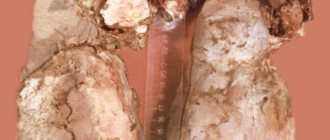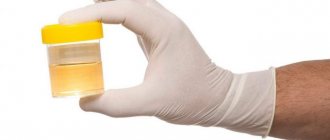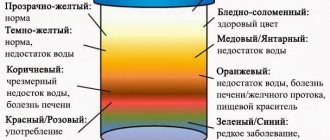Urine DPID is an analysis that is an indicator of the level of bone tissue metabolism. If the doctor has any suspicions that the patient has bone problems, he is ordered to conduct this study.
Bone undergoes almost constant renewal: old bone tissues are destroyed, and new ones are formed. If this process is disrupted, the human bone will become brittle and brittle.
Deoxypyridinoline (DPID) is the main material found in collagen fibers. It ensures collagen stabilization. If the process of bone resorption occurs, collagen begins to be intensively destroyed, and DPID enters the circulatory system. This material is then excreted from the body along with biological fluid through the kidneys.
Urine DPID allows one to identify the level of bone tissue destruction, as well as the effectiveness of treatment against various bone pathologies. This analysis is prescribed in the following cases:
- During postmenopause, a woman stops producing sex hormones, which cannot but affect her health. At this time, most women experience postmenopausal osteoporosis, characterized by rapid loss of bone mass. DPID allows you to monitor the course of postmenopausal osteoporosis and carry out competent therapeutic measures.
- With hyperparathyroidism, which is in its primary form, strong changes occur in the human body. This disease is an endocrine disease and is characterized by excessive production of parathyroid hormone by the parathyroid glands. Hyperparathyroidism causes an increase in calcium in the blood, which leads to abnormal abnormalities in the bone tissue.
- During therapy for Cushing's disease. This disease is quite severe and is manifested by excessive production of the hormone ACTH. This pathology is characterized by the development of systemic osteoporosis, so monitoring DPID is simply necessary.
- If the patient has Paget's pathology. This disease is characterized by a violation of the proper synthesis and metabolism of bone tissue, as well as increased breakdown of bone cells, which are then replaced by defective ones.
- With excessive levels of the hormone T4, which is produced by thyroid cells.
- With long-term therapeutic measures carried out through the use of glucocorticosteroids.
- If there is a suspicion of damage to bone tissue due to oncological processes or it is necessary to monitor the level of DPID during therapeutic measures against cancer cells.
- For osteoarthritis and polyarthritis.
If the analysis shows that DPID excretion is reduced by 35 percent, then the treatment is correctly selected and there is no need to adjust it. When an increase in urine DPID is noted, this means that therapeutic measures should be reviewed and changed.
DPID norm
Men and women have different levels of deoxypyridinoline. For example, in women there is a gradual increase throughout their lives. The peak level of DPID occurs in old age.
The following indicators are considered the norm for DPID in urine:
- for women – from 3 to 7.4;
- for men – from 2.3 to 5.4.
An increase in this substance is observed when the patient develops osteoporosis. This disease is characterized by a decrease in strength and elasticity in bone tissue. Basically, it occurs due to:
- entering the postmenopausal period;
- use of hormonal drugs;
- the patient has thyroid hormone dysfunction, chronic illnesses or obesity.
INTERPRETATION OF RESULTS:
Reference values (standard version):
Age, years Men Women Units of measurement up to 10 years 13.7 – 4110.5 – 45 nmol DPID/ mmol creatinine 10 years 4.5 – 263.8 – 34.411 years 5.9 – 318.1 – 33.812 years 7.3 – 436.8 – 40.013 years 7.4 – 364.2 – 35.7 14 years 3.2 — 433.5 — 23.615 years2.8 - 283.8 - 15.116 years2.2 - 211.7 - 13.717 years1.1 - 261.6 - 12.218 years1.5 - 8.81.9 - 7.8≥ 191.8 - 11.9 Premenopause 2.1 - 10.7 Postmenopause 2.5 - 1 4.4 Biomaterial and available methods of collection: Type B officeUrinePreparation for the study: For the study, a single portion of morning urine is used, the first or second urination before 10:00 am. With normal drinking regimen (1.5-2.0 liters per day). Women are not recommended to take a urine test during menstruation.Research method:
solid phase chemiluminescent
Deoxypyridinoline is a marker of bone resorption (destruction of type 1 collagen); it has important clinical significance in patients when monitoring osteoporosis therapy, especially in postmenopausal women. Determination of DPID is informative in monitoring bone metabolism processes during menopause and postmenopause to assess the risk of fractures; in osteoporosis - in assessing the effectiveness of antiresorptive therapy.
Studies have shown high specificity and sensitivity for determining DPID also in the following diseases: rheumatoid arthritis, primary hyperthyroidism, Paget's disease.
Rules for taking the analysis
In order for the result to be accurate when submitting biological material, certain rules must be followed:
- one day before passing urine, you should not use drugs that have a diuretic effect;
- During the day you need to refrain from eating vegetables and fruits, which can provoke a change in the color of urine;
- Three days before donating biological fluid, you should completely stop drinking alcohol, as they contribute to the destruction of tissue in the body and take quite a long time to be eliminated.
Urine collection is carried out in a standard way: in the morning, an average portion of urine is collected. In addition, only a clean, sterile container should be used to donate biological fluid. If a woman is menstruating at this time, the collection of the test should be postponed, since blood coming out of the genital tract can get into the container with urine and affect the result.
Reasons for performing a deoxypyridinoline test
Deoxypyridinoline levels are measured using a urine or serum test. This is done when the doctor suspects that the patient's bones are deteriorating due to the onset of degenerative (such as osteoporosis) or metabolic bone diseases. This test measures the rate of bone resorption in a patient's body.
In addition, the cross-fiber deoxypyridinoline content is measured by calculating the protein content of various dentin and bone tissue samples. This procedure allows you to calculate a person's age and the likely extent of bone degeneration. Since conducting multiple bone scans to determine the degree of bone degeneration is time-consuming and not always convenient, it is better and faster to take a urine test.
Pyridinoline and deoxypyridinoline are derivatives of transverse collagen fibers. These markers are used to measure the rate of bone resorption (breaking down of old bone tissue) in the body.
https://www.youtube.com/watch?v=ytpolicyandsafetyru
Deoxypyridinoline is a type I collagen or protein found in bones. It is usually excreted from the body in urine without going through a metabolic stage.
The level of this bone collagen in the urine clearly indicates the extent of bone degeneration (breakdown).
The reason for this is simple: minerals from destroyed bone tissue (the main one being calcium) are released into the blood and then excreted from the body through urine.
Deoxypyridinoline levels are measured using a urine or serum test. This is done when the doctor suspects that the patient's bones are deteriorating due to the onset of degenerative (such as osteoporosis) or metabolic bone diseases.
This test measures the rate of bone resorption in a patient's body.
This procedure is used to determine the amount of collagen lost from the body, which allows the approximate loss of bone material and the degree of degeneration of the skeletal system to be calculated.
In addition, the cross-fiber deoxypyridinoline content is measured by calculating the protein content of various dentin and bone tissue samples. This procedure allows you to calculate a person's age and the likely extent of bone degeneration.
Since conducting multiple bone scans to determine the degree of bone degeneration is time-consuming and not always convenient, it is better and faster to take a urine test. Its results will allow doctors to identify the extent of bone tissue destruction and establish the mechanism of this process.
All of this will help during the treatment of this condition.
Preparation
When preparing for a urine test for DPID, you must adhere to the following rules:
- Urine is collected during the first or second urination in the morning;
- Before collecting urine, hygiene procedures must be carried out, because the urine should not contain contaminants. For this reason, the sample is not taken during menstruation;
- Urine from the middle of urination, 1-2 seconds after it begins, is best suited for analysis. Before collecting the sample, do not interrupt the urination process;
- The sample must be delivered to the laboratory as quickly as possible.
Procedure
The urine should be collected in a sterile container, which is then sent to the laboratory. It measures the levels of deoxypyridinoline (DPID) and pyridinoline (PID). These data indicate the level of bone resorption.
DPID in children
Unfortunately, bone tissue pathologies are observed not only in adults, but also in children. This analysis can be prescribed if a child is suspected of having osteomalacia, thyrotoxicosis, or autoimmune pathologies.
In childhood, deoxypyridinoline levels can vary from 40 to 50 nmol/mmol creatinine.
If the DPID level is excessively elevated, then the patient has a strong tendency to develop bone fractures. In cases where a person has been suffering from osteoporosis for a long time and during analysis his DPID level is increased several times, there is a possibility that he will develop other pathologies of bone tissue. In addition, the risk of developing malignant tumors increases significantly.
What values are considered normal?
The level of creatinine in urine varies depending on gender and body weight, which is associated with the volume and activity of the muscular system. Significant body weight implies the formation during metabolism of a larger amount of this breakdown product. Thus, its level in males can range from 7.1 to 17.7 mmol/day, while in women its values should not exceed 5.3–15.9 mmol/day.
In order for a doctor to assess the full picture of creatinine metabolism, it is necessary to take a test not only of urine, but also of blood. The content of creatinine in urine is influenced by a person’s age, so in children and the elderly, as a rule, this indicator is quite low compared to people 20–40 years old. Diet may also be the reason for changes in parameters.
Editor
Update date: 09/28/2018, next update date: 09/28/2021
The main material of collagen cross-links in bones.
Bone collagen is characterized by the presence of cross-links between individual collagen molecules, which play a major role in its stabilization and are presented in the form of deoxypyridinoline (lysylpyridinoline, DPID) and pyridinoline (oxylysylpyridinoline, PID). Cross-links are formed extracellularly after the deposition of collagen molecules into the matrix. Deoxypyridonoline is a pyridine cross-link that is inherent in mature collagen and does not undergo further metabolic transformations.
The release of DPID and PID into the vascular bed from the bone occurs as a result of its destruction (resorption) by osteoclasts - destruction of collagen.
DPID is the most bone-specific because it is found predominantly in bone and only in small amounts in dentin, aorta and ligaments. In addition to bones, PID is also found in sufficient quantities in cartilage. In bone, DPID and PID in bone are in the ratio of 4:1.
DPID and PID are excreted in the urine in free form (about 40%) and in peptide-bound form (60%). In bone tissue, processes of synthesis and resorption are constantly ongoing, which are closely interconnected and are subject to hormonal regulation (parathyroid hormone, calcitonin, vitamin D, thyroid hormones, growth hormone, sex hormones, glucocorticoids, etc.). Measurement of specific degradation products of bone matrix characterizes the rate of bone turnover. Under pathological conditions, these processes become uncoupled and, if resorption exceeds formation, bone loss occurs. DPID and PID are currently considered the most adequate (especially DPID) markers of bone resorption.
INTERPRETATION OF RESULTS:
Reference values (standard version):
Age, years Men Women Units of measurement up to 10 years 13.7 – 4110.5 – 45 nmol DPID/ mmol creatinine 10 years 4.5 – 263.8 – 34.411 years 5.9 – 318.1 – 33.812 years 7.3 – 436.8 – 40.013 years 7.4 – 364.2 – 35.7 14 years 3.2 — 433.5 — 23.615 years2.8 - 283.8 - 15.116 years2.2 - 211.7 - 13.717 years1.1 - 261.6 - 12.218 years1.5 - 8.81.9 - 7.8≥ 191.8 - 11.9 Premenopause 2.1 - 10.7 Postmenopause 2.5 - 1 4.4Marker levels in urine
Deoxypyridinoline is mostly found in the collagen of bone tissue, which gives it the opportunity to be the most significant indicator of its metabolism. The DPID indicator in female urine is higher than in male urine, its increase is observed throughout life. In elderly women, compared with representatives of childbearing age, urinary DPID excretion is three times higher; it is important that it is not affected by nutrition, exercise, or kidney function.
The norm for the presence of deoxypyridinoline in urine is considered to be:
In both sexes, pyridinoline excretion is significantly increased in hyperparathyroidism. Less important indicators of increased pyridinoline excretion are observed in osteoporosis and rheumatoid arthritis. Osteoporosis is a disease where bone loses elasticity and strength. The cause of the pathology is considered to be biochemical changes in the minerals of bone tissue.
Most often, the disease develops in older women, with exceptions being representatives of the weaker half of the younger age. Men suffer from osteoporosis much less often. Contribute to the development of the disease: hormonal therapy, chronic diseases, obesity.
Correctly selected therapy reduces excretion in any case. Based on how markers of bone resorption and formation change, the likelihood of a bone fracture risk can be calculated, which will allow the optimal choice of treatment to be made.
Decoding the analysis: normal values
Knowing the terminology of doctors, you can easily decipher your tests . Of course, at the first stage you should not make any diagnosis for yourself, since its confirmation requires additional research. Let's give examples of values in the analyzes and see what is considered normal:
- Red blood cells (BLd): should be absent. If found, the person is immediately sent for further examination. Acceptable BLd values are no more than 1-2 in the field of view.
- Bilirubin (Bil): It should not be detected in a healthy person. If pathological changes in the liver begin, it can be detected.
- Ketones (KET): Normally absent, if detected, it may be caused by diabetes.
- Protein (PRO): Normal is none. Detection may be caused by pathological changes in the kidney, inflammatory processes (cystitis, prostatitis).
- Bacteriuria (NIT): absent, or can be detected in small quantities. A healthy person has sterile urine. But when the process of urination occurs, microbes enter it; their number should not exceed 10,000 per milliliter of urine.
- Glucose (GLU): also should not be detected at normal levels. If it was detected, this means diabetes is possible.
- Urine acidity (pH): the norm for the human body is 5.0 – 6.0. Above these values may indicate a deviation of the thyroid gland and kidney failure.
- Density (SG): the norm for the body is 1030, more means diabetes, less than the norm causes kidney failure.
- Leukocytes (LEU): diseases associated with the kidneys and urinary tract show an increase in the content of LEU in urine.
- Urobilinogen (UBG): The urine of a healthy person may contain traces of this substance. Indicators above the norm will indicate the disease jaundice, toxic and inflammatory processes in the liver and intestines.
In addition to these values, the analysis determines the color, smell, and weight of urine, which should also be normal. A healthy person is unlikely to come to the clinic for examination, so those who undergo these tests already have inflammation in the body.
To ensure accurate analysis
The day before urine collection, you should not be treated with diuretics. It is also undesirable to consume vegetables and fruits that change the color of urine. An important condition for obtaining accurate research results is the abstinence from drinking alcoholic beverages, even beer and low-alcohol cocktails are excluded. Alcohol destroys body tissue, takes a long time to be eliminated, and is often found in biological fluids.
Urine collection is preceded by strict hygienic toileting of the genitals. On critical days, urine collection is not carried out. For analysis, you need to collect 50 ml of urine. When urinating for the first time in the morning, drops of urine are first released into the toilet, then a container is placed to collect the urine.
OAM execution sequence
When testing urine in a laboratory, the following processes are performed:
- physical parameters of biological fluid are assessed;
- the presence or absence of organic substances is determined;
- The sediment is examined under a microscope.
In modern laboratories, urine analysis is often performed with special analyzers that provide results very quickly. However, some indicators are determined using a microscope. It’s not even worth trying to decrypt all the recorded data yourself. After all, many people do not know the concept of neg in urine analysis and what it means, this needs to be clarified further. Decoding must be performed by a trained specialist who knows in what value this or that indicator should be assessed.
DPID marker value
If the level of the DPID marker is elevated, this is a signal of an increased risk of bone fractures. Patients with osteoporosis who have marker levels 3 times higher than normal are likely to have one (or more) other bone diseases, including the possibility of malignant growth.
Bone tissue DPID marker studies are used:
- To determine the risk of osteoporosis.
- When monitoring during postmenopause.
- When monitoring replacement therapy.










